Lian Tanner's Blog, page 4
January 18, 2020
When my country is on fire
When my country is on fire, is writing children’s books still a useful thing to do?
This is a question that has been puzzling me over the last couple of months. When Victoria, New South Wales, Queensland and South Australia have faced fires fiercer and more destructive than anything we have ever seen; when other parts of the country are in a drought that has gone on for far too long; when climate change is well and truly here – isn’t telling stories a waste of time?
Sometimes, in moments of despair, I think it is. But in my heart I know that stories are more important than ever. Especially children’s stories.
Some picture books can speak to us directly about what’s happening. The House on the Mountain, by Ella Holcombe and David Cox, tells the story of a family experiencing a bushfire, its devastating aftermath, and the long process of healing and rebuilding.
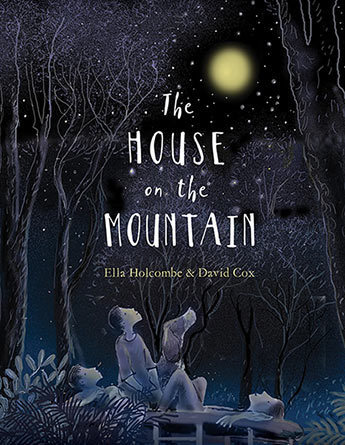
My own picture book, Ella and the Ocean, illustrated by Jonathan Bentley, is about drought, resilience and the importance of holidays.
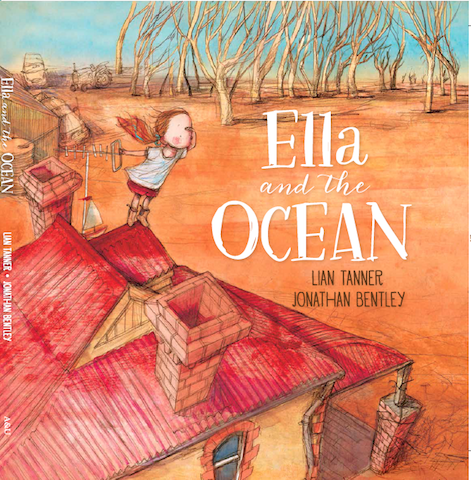
For older children, there’s what Deborah Abela calls her ‘cranky climate change trilogy’, which begins with Grimsdon.

Or Bren MacDibble’s beautiful How to Bee.

But of course there are a huge number of children’s books that are nothing to do with fire or drought or climate change. What about them? Are they a waste of time?
Far from it. When the world is so uncertain, both adults and children need books that make us laugh. We need books that will take us to places where there are dragons or wizards or multi-storey tree houses. We need books that will allow us to escape for a little while, and remind us of the power of imagination and the possibility of change.
Because imagination and change have suddenly become very important. And what better place to find them than in a children’s book? Between those pages, a mouse can outwit the dreadful gruffalo, an overprotected girl can become a warrior, a young witch and a monster can be friends, even when that seems impossible.
That’s what children’s books bring us; love, courage, laughter – and the power to change what is wrong. Right now we need such stories more than ever.
The post When my country is on fire appeared first on Lian Tanner.
January 4, 2020
Research
Writing a story set in a particular historical period is tricky. You have to get the details right, which means a lot of research. And while some writers love research, I find it a chore. That’s one of the reasons I like writing fantasy, where I can make up my own details and no one can tell me I’m wrong.
But right now I’m working on a novella for adults, set in the fifteenth century. This is something completely new for me, because for the past twelve years or so I have only written for children. But this story has been hanging around in the back of my mind for some time, wanting to be written, and I’m having fun with it. (And yes, I’ll be getting back to my next kids’ book very soon!)
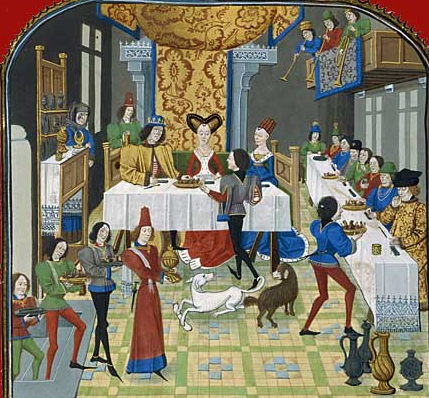
The novella is a fantasy, but I still want to get the historical details as accurate as I can. And while some writers spend months or years on research before they even start a story, I like to write the story, then work out what I need to know so that I don’t have to research a whole lot of stuff I’m not going to use.
So now I’m going through the first draft checking details. And what I’m finding is that the fifteenth century lacked an awful lot of things that I had blithely assumed I could include. Like table napkins, wedding dresses and stoves. They had stirrups, so I could leave them in. But table napkins had to be replaced by bits of bread for wiping the mouth, the wedding dress gave way to a new kirtle, and the stove was changed to a fireplace.
I suspect that when I finished I’m going to have to get a historian to check it for me, to make sure I haven’t missed anything. But for now at least, it’s getting a little bit closer to the real fifteenth century.
The post Research appeared first on Lian Tanner.
December 21, 2019
Advice for young writers #2
Last week I talked about how important it is for writers to take notice of what’s going on around us, because that’s where so much of our inspiration comes from. This week I want to talk about what’s going on inside us.
If I’m writing a story about someone who is heartbroken, I have to know what it feels like to be heartbroken. And if I’m writing about someone who is happy or scared or jealous, I have to know what those things feel like, too. So no matter what’s happening, there’s always a bit of me that’s standing back watching, and taking notes. Hmm, that’s interesting. When I cry, my nose runs, and my whole face feels as if it’s curling up.
This is something else I do in schools. First, I ask people to put up their hands if they have ever been really, really angry.

Every hand goes up, including the teachers. So then I get half a dozen volunteers up the front and ask them to describe what it feels like to be really, really angry.
I always get some great responses. ‘It feels as if there’s a volcano inside me, about to explode.’ ‘Sometimes I’m so angry that I want to scream.’ ‘I clench my fists really tight.’
When I’ve got a few answers, I explain how we can use this in a story. Instead of just saying, ‘Esmerelda was really angry’, we think about our own experience of being angry and give those feelings to the person we’re writing about. ‘Esmerelda felt as if there was a volcano inside her, about to explode. She clenched her fists really tight. She was so angry she wanted to scream.’
I do the same thing with a couple of other strong emotions, like ‘really excited’ or ‘really scared’, and by then most of the kids in my audience are throwing up great suggestions and turning them into story sentences.
‘Esmerelda couldn’t stop jumping up and down.’ ‘Esmerelda felt as if she was going to burst!’ ‘Esmerelda curled up into a tight little ball and didn’t move.’
This is such a great way of enriching our writing and making it more interesting to read. But only if we take notice!
The post Advice for young writers #2 appeared first on Lian Tanner.
December 14, 2019
Advice for young writers # 1
My publicist sent me a list of questions the other day for the Children’s Books Daily website. One of them was, ‘Any words of advice for young writers?’ I answered this question the same way most authors do: ‘Read read read. Write write write.’
You need to read a lot because that’s how you learn about story shape and the rhythm of words and how to catch the reader’s attention and a whole lot of other stuff that good books can teach you. (And of course, the bad books teach you what not to do.)
You need to write a lot because that’s how you find your own voice, and what you want to write about. It’s how you take what you have learned from reading and put it into practice. And fail, and try again. And fail again, and try again. And gradually get better at it.
But then I added something else to my advice. ‘Go out and live your life with curiosity and passion. Have adventures, big and small. Notice things. Put yourself in other people’s shoes.’
If you’ve ever heard me talk to a group of school students, you’ll know that halfway through I often say, ‘For authors, our lives are our material.’ And then I give some examples. I talk about how visiting the catacombs in Paris was the inspiration for the Place of Remembering in Museum of Thieves.

And how my memories of scuba diving on the tropical reefs near Rabaul came in handy when I was writing Sunker’s Deep.

Adventures (big and small) are hugely important to a writer. We weave them into our books; we use them as inspiration.
Putting ourselves in other people’s shoes is also important. When I’m out and about I play a game with myself where I notice how someone walks or stands, and try to work out what they are feeling. Do their feet hurt? Are they unhappy? Are they worried about their daughter who hasn’t written to them for six months, or their father who has lost his job?
Sometimes I copy the way they’re walking/standing – not as a mockery but to see what it feels like. And then I try to describe it, as if I was using it in a story.
So writing isn’t just about writing. It’s also about life, and paying attention, and imagining ourselves in other people’s bodies. All of which is both fun and interesting!
I’ll continue this theme next week with Part 2. In the meantime, if you want to read more advice for young (and old) writers, check out this page.
The post Advice for young writers # 1 appeared first on Lian Tanner.
November 16, 2019
An out-take from City of Lies – Morg’s journey
This is an out-take from City of Lies (The Keepers #2), and tells the story of what happened to Morg when Herro Dan sent her to search for Goldie, Toadspit and Bonnie. I cut it out of the book because it was slowing the story down too much. But I have always liked it, mainly because it gives us a rare glimpse into the life and mind of a slaughterbird.
I hope you enjoy it!
****
Many miles away, Morg was flying above the ocean. Her great black pin-feathers were spread wide. Her wings beat a steady rhythm, although she had been flying for three days without rest or food.
‘Find Toadspit and Goldie,’ Herro Dan had told her. ‘And Bonnie too. Look for ships and the signs of a big stealing, somewhere out to sea. If you can’t find them there, go to the cities.’
And then he had flung her into the air and turned away, drooping like a lost fledgling.
Morg liked Toadspit. His head feathers were so black that he might have been one of her own chicks, and she had always thought it a pity that he refused to learn to fly. But she had seen no sign of him so far.
She flexed her wingtips, knowing that she would have to find something to eat soon, or she would begin to weaken. Her head turned this way and that, scanning the horizon. Nothing. Nothing. Noth—
Her great beak jerked around. A small island lay to the east, looking no bigger than the speckle on an egg. But there was something down there. She could feel it …
She let herself drift into a long glide. The wind blew her off course several times, and by the time she reached the island, the sun had shifted three wing-breadths across the sky. The coolness of day-end crept under her feathers. She was hungrier than ever.
The stink hit her so suddenly that she nearly fell out of the sky. At the same time she heard a loud squawking of gulls. Ancient memories roiled through her, driving out all thought of the task Herro Dan had set her.
She landed with a thump on whatever it was the gulls were fighting over. They squawked at her, and tilted their red beaks, as if they thought they might scare her. But when she ran at them they scattered like mice, lifting up into the air and hanging above her, screaming.
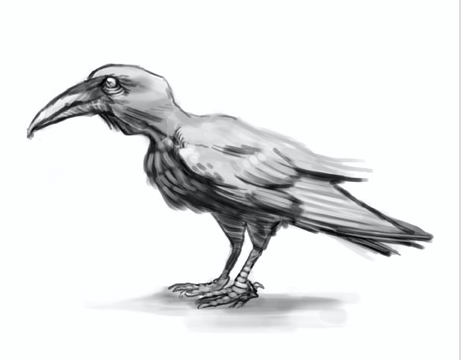
Morg peered at the thing that lay under her claws. Her memory had not failed her. She was standing on the carcass of a whale. A glorious, rotting, stinking whale, laid out for her in a feast that would last for days.
One of the gulls, braver than the rest, landed on the whale’s head. She ran at it, beak agape, and it threw itself into the air in panic.
Morg strutted up and down the body of the whale. ‘Mi-i-i-ine!’ she croaked. ‘Mi-i-i-i-ine!’
Then she drove her beak into the tattered flesh and, forgetting everything and everyone else, she began to feed.
***
Several days later:
Morg could hardly remembered when she had gorged herself so well. A hundred years? Two hundred?
She perched on a giant rib that was almost stripped of flesh, and lazily spread her wings. The sea breeze tickling at the base of her feathers reminded her of something. What was it? Ah, yes. It was like being scratched by the boy chick, Toadspit.
Herro Dan’s instructions were coming back to her now. She turned her head and began to groom herself thoughtfully. It would be a pity to leave the whale carcass. It might be a long time before she came across such a treasure again.
But truly, she had eaten all she could. And Toadspit might still learn to fly, if she could find him before he grew too old and set in his ways. Perhaps she would look for him along the coast. She had had enough of the open sea for now.
She rustled her tail feathers back into place and launched herself into the air. She circled twice above the dead whale, screaming threats at the gulls below. Then, satisfied that they would not forget her, she turned east and began to fly heavily towards Spoke.
The post An out-take from City of Lies – Morg’s journey appeared first on Lian Tanner.
November 9, 2019
A writer’s notebook
I don’t go anywhere without a notebook. I’ve carried one for years, because I never know when I’m going to see something or hear something or meet someone who gives me an idea for a story. I can be in the middle of talking to a friend, or at a movie, or on the bus, when I suddenly dive for pen and paper, desperate to write the idea down before it vanishes.
Yesterday I was looking back through one of my old notebooks, trying to find a note I half-remembered about an invisible dragon (because I thought it might fit into a story I’m writing). I found the note I was looking for, but I also found half a dozen other notes that have already grown into books.
I thought you might like to see some of them, to see the tiny beginnings that a book can grow from. I’ll start with the oldest one.

This was the very first note I made for the book that eventually turned into Museum of Thieves. See how my original idea was about an enormous tip, or rubbish dump? And then – I think I wrote the line at the bottom a couple of days later – I realised it shouldn’t be a tip, but a museum. So my first idea isn’t always the right one; I have to keep thinking about it until it feels right.
This next idea came from a dream I had – I woke up with a picture in my mind of an ancient ship sailing around and around the southern ice.

I didn’t know why the ship was in the ice, and in this note I was playing around with possible reasons. None of these reasons turned out to be the right one, and Ice Breaker was a book that changed enormously from the way I first thought about it. But that first image of an ancient ship kept going all the way through the changes.
The next idea came from a visit to Chicago’s Museum of Science and Industry. They have a real Second World War German submarine in the basement, and as soon as I saw it I knew I wanted to write a book set on a submarine.

As I wrote the story, the girl in the note became a boy, Sharkey, born on a lucky tide and blessed by the ancestors. And the book became Sunker’s Deep.
The third book in the Hidden series also came from a dream, and this was probably the strangest one of all. I woke up one morning with this sentence going round and round in my head.

I’ve got no idea what the dream was (probably just as well!) but the sentence made me think of a small travelling theatre company, down on its luck. It eventually turned into Fetcher’s Song (Battlesong in Canada and the US).
The post A writer’s notebook appeared first on Lian Tanner.
November 2, 2019
The book that found its way home
When people ask me how I got started writing for children, I usually talk about the time roughly 20 years ago when I was writing a whole lot of different things – radio plays, stage plays, short stories for adults, short stories for children and freelance journalism. And I explain that it was the children’s stories that I enjoyed most and had the most success with, so that’s what I ended up focusing on.
But I was reminded the other day that it actually started before then.
Thirty-two years ago, when I was sharing a house in South Hobart with a friend, I wrote a couple of books for her little boy Ben. That’s really what got me started writing for children, so although the books weren’t much good, and I never tried to get them published, they’re an important part of my history. And they were written and illustrated with great love and care.

Ben, who is now 37, still has one of the books, The Great Muesli Bar Mystery.
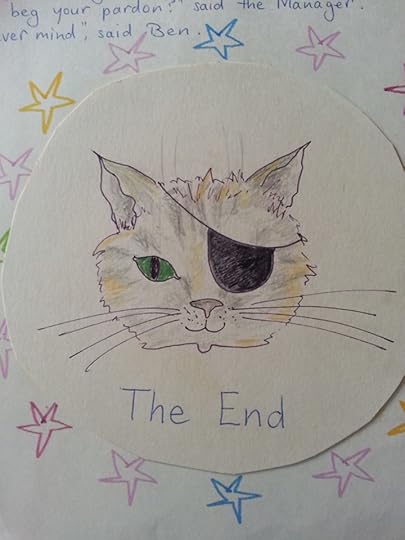
He thought he had the other one, too, but when he looked he couldn’t find it. (That one was called The Great Skateboard Mystery – as you can see, I wasn’t very good at titles in those days.)
So last Monday I was visiting the maternity ward at Hobart Private Hospital to see Ben, his partner and their brand-new daughter, Isobel, when Ben’s father arrived. He had been browsing at the Hobart tip shop … and found the second book! The skateboard one!
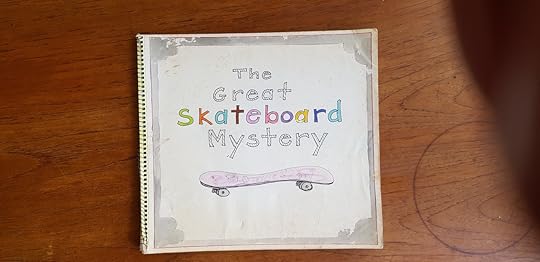
We assume it must have got thrown out during a house move at some stage without anyone noticing. And there it was, for all those years, waiting to be found and taken back home. Amazing. And so lovely to see it again.
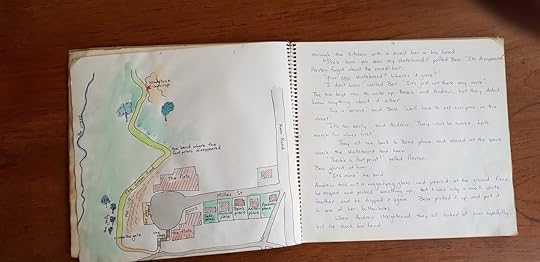
P.S. Isobel is gorgeous.
The post The book that found its way home appeared first on Lian Tanner.
October 25, 2019
The trouble with cats
I’m having a hard time with one of the neighbourhood cats. Don’t get me wrong, I love cats, most of all Harry, who has lived with me for the last five years. And before him, I’ve had cats for as long as I’ve been an adult.
But a cat just killed a baby bandicoot that was living in my garden, and I’m sad and furious. It’s not the first time this has happened – this particular cat is far too good a hunter, and has killed bandicoots, birds and blue tongue lizards.

Years ago, I had no problem with cats roaming the neighbourhood. I just thought that was what cats did. But there’s so much information now about how many native animals and birds they kill, and the damage they do to wildlife, that I can’t ignore it.
Harry is too fat and lazy to hunt anything except cat biscuits. He spends his days lying inside in a patch of sun, instead of stalking birds and small mammals. But if he suddenly became a hunter, I’d build a wire run for him, so he could spend as much time as he wanted outside without harming anything.
The cat’s owner is a nice woman, and I know she’s worried about the wildlife too. I’ll have to go and talk to her. Poor little bandicoot.
The post The trouble with cats appeared first on Lian Tanner.
October 12, 2019
The first idea is hardly ever the right one
For the last couple of weeks, I’ve been playing with ideas for a new story. At one point I had several ideas on the go, and I couldn’t choose between them, because they all interested me but none of them stood out. So I randomly chose one of them and started playing around with it, finding pictures that might go with the characters, and thinking about possible scenes.
It was a nice idea, but I couldn’t get really excited about it.
So I started scribbling down some other possibilities, most of them to do with the main character, Josie, and why she was so unhappy, and what might happen when the goats arrived.
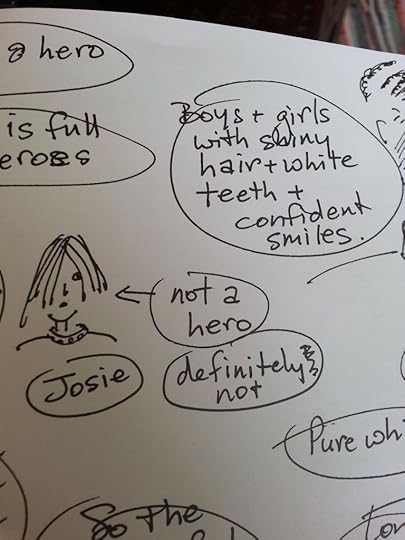
Over five days I wrote pages and pages of thoughts with circles around them and lines going to other circles, and arrows and speech bubbles and exclamation marks and the occasional drawing. I pushed that first idea in different directions, and threw other ideas at it to see if they’d stick or bounce off. I forgot about it for a couple of hours while I did some gardening, then went back and looked at it again.
I scribbled a bit more. And suddenly I found myself laughing out loud. A laugh of discovery. The sort of laugh that means, ‘Yes, that’s wonderful! That’s where it’s supposed to go!’
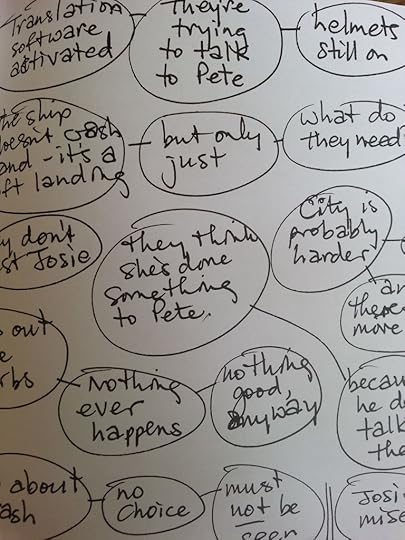
Most ideas seem to need pushing like this. I don’t think I’ve ever had an idea for a story that was wonderful right from the beginning. Wonderful needs work. Wonderful needs nudging and poking, and letting your imagination fly off in weird directions. Wonderful needs patience.
So now I’ve got an idea that’s a fair way from the original one, but it’s got me excited at last.
Push your ideas, people. Don’t be satisfied with the first one. It’s hardly ever the one you’re looking for.
The post The first idea is hardly ever the right one appeared first on Lian Tanner.
September 28, 2019
Will Lord Rump choose treachery or love?
This week sees the publication of Haunted Warriors, the third and final book in the Rogues trilogy, in which the story of Duckling, Pummel, Otte and Sooli, comes to its conclusion at last. And of course you get to find out whether Lord Rump will choose treachery or love.

Rump has never been a trustworthy man; he regularly puts his granddaughter Duckling in danger, and it’s never entirely clear whether he loves her or not. It’s not even clear whether she’s really his granddaughter, or whether he bought her in the marketplace as a baby in case he ever needed a disposable girl.
For a long time I didn’t know the truth either; in fact, I wrote the entire trilogy not knowing how it would end. I knew Lord Rump wasn’t to be trusted, but would he betray the children if the temptation was strong enough, or would he stand by them? And at the very end, would he give up his wicked ways, or continue to be a rogue and a villain?
I couldn’t imagine him turning honest; it just wasn’t in his character. But what would Duckling do if he chose to keep going? I didn’t think she could stay with him – her friendship with Pummel, Otte and Sooli had changed her so much that to go back to a life of crime would be impossible. But how could she leave her grandfather, who she loved despite his many failings?
I puzzled over this all through writing the third book. I had plotted the book in great detail, but I’d left the end blank, hoping that inspiration would hit me. And it did! I’m not going to tell you what I decided, but I will tell you that I’m really satisfied with the ending.
I hope you will be, too.
The post Will Lord Rump choose treachery or love? appeared first on Lian Tanner.



